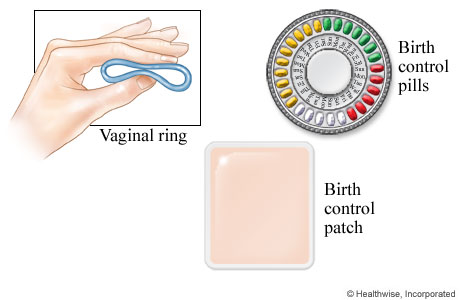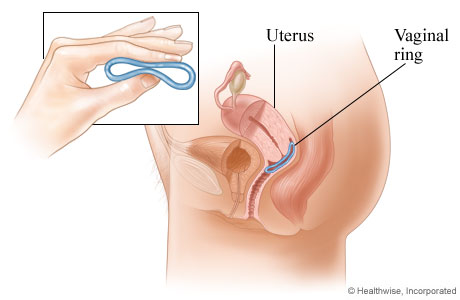

Birth control pills, skin patches, and vaginal rings contain estrogen and progestin. There are also progestin-only birth control pills, implants (such as Nexplanon), and shots (such as Depo-Provera). Hormonal methods of birth control prevent eggs from being released from the ovaries, thicken cervical mucus to prevent sperm from entering the uterus, and thin the lining of the uterus to prevent implantation.
Hormone pills come in packs. Most packs contain 3 weeks of hormone pills. During the fourth week, when you do not receive hormones, you have a menstrual period. Some packs of pills have hormone pills for the fourth week instead of sugar pills (non-hormone pills). Taking hormones for the entire month eliminates or reduces the number of periods you have.
The hormone patch releases estrogen and progestin through your skin for 7 days. Over a 4-week period, you use 1 patch per week for 3 weeks, then no patch for 1 week. During this week, you have a menstrual period. You can wear the patch on your lower abdomen, upper torso (not breasts), buttocks, or upper arm.
The hormone vaginal ring is placed in the vagina for 3 weeks. This gives you continuous birth control for the month. On the first day of the fourth week, you remove the ring. You then have a menstrual period. The exact position of the ring in the vagina is not critical for the ring to work.
Current as of: April 30, 2024
Author: Ignite Healthwise, LLC Staff
Clinical Review Board
All Ignite Healthwise, LLC education is reviewed by a team that includes physicians, nurses, advanced practitioners, registered dieticians, and other healthcare professionals.
Current as of: April 30, 2024
